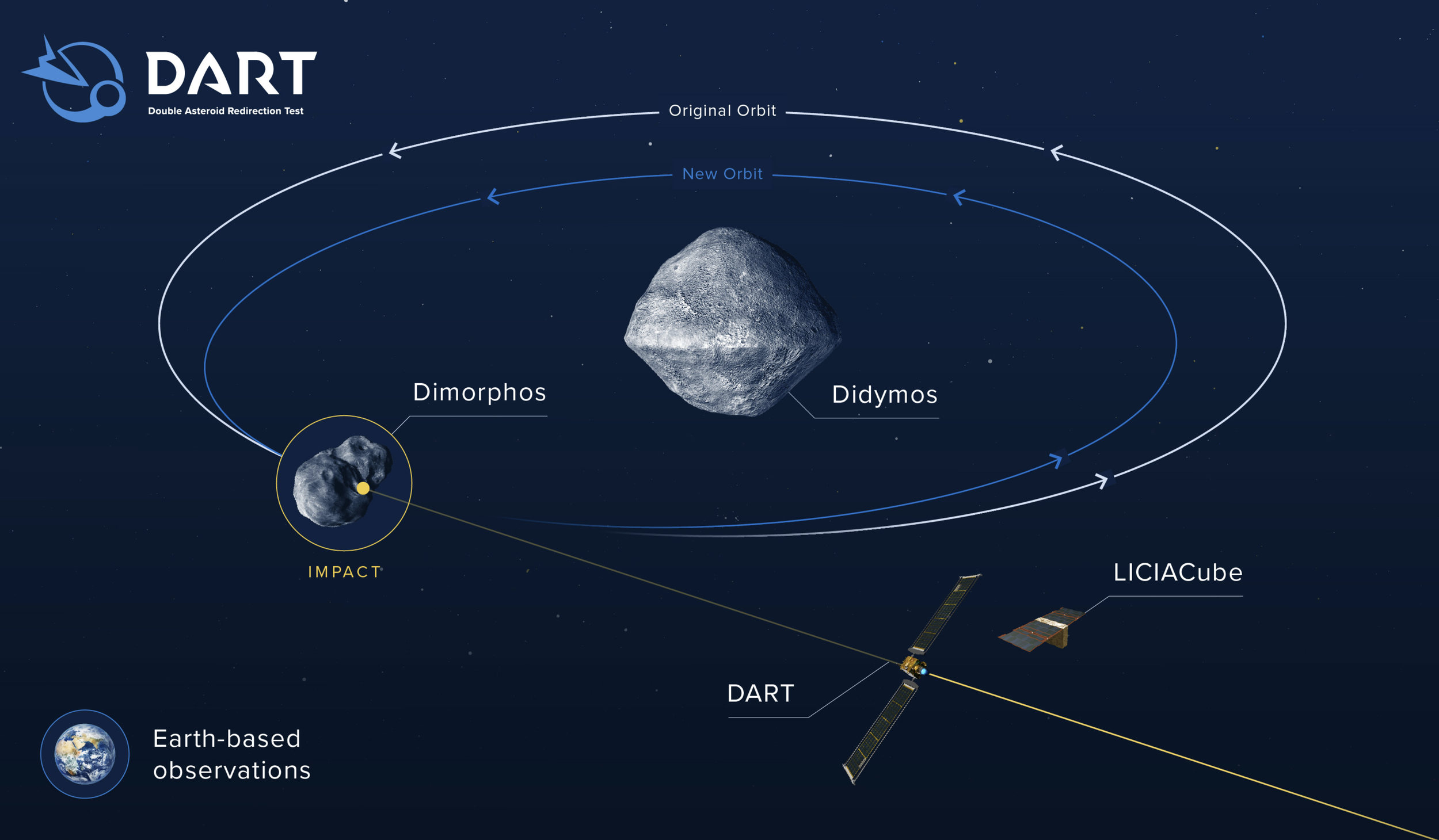DART, The Potentially Earth-Saving Project
DART, or Double Asteroid Redirection Test, is a potentially Earth-saving (though not any time soon) project courtesy of NASA and Johns Hopkins Applied Physics Laboratory. Its goal is to "demonstrate asteroid deflection with a kinetic impactor," which is more impressively stated as "we're going to smash a spacecraft into an asteroid at nearly ten times the speed of a bullet."
It's the first practical experiment in planetary defense and a valuable test performed "before any actual need is present." It was launched on November 23rd, 2021, and should reach its target in fall 2022.
That target is a binary asteroid system:
The larger Didymos is nearly half a mile wide, and its little cosmic companion is a mini-moon, a moonlet. It's called Dimorphos and is only 525 feet wide. DART will pick on the moonlet. Though to be fair, DART is closer to the moonlet in size.
Compared to other space projects, this one is simple. It consists of two main components. First, the DART spacecraft (5 ft 11 in × 6 ft 3 in × 8 ft 6 in), which has no scientific payload and is functionally a 1,300-pound battering ram with a camera.
The LUCIACube
Second, the 31 pound LICIACube (Light Italian CubeSat for Imaging Asteroids) from the Agenzia Spaziale Italiana (ASI), aka Italian Space Agency.
LICIACube is attached to DART and will separate 10 days before the 15,000 mph impact. The CubeSat features the LEIA and LUKE imagers, which will observe the boom and study the plume of ejected material. And possibly the resultant crater, among other things, to reveal the asteroids' characteristics.
This impact--and any similar maneuvers that may save our future skins--won’t obliterate the threat. Blowing up an asteroid may not be feasible. Or it could fragment it into many bits that could still hit Earth.
Instead, the impact will shorten Dimorphos' 12-hour orbit around the larger Didymos. The orbit will only become a few minutes shorter, but that gravitational nudge becomes magnified with time. The immense distances and separations of the universe play to our advantage in this case, and any slight shifts would cumulatively divert a potential doomsday asteroid.
No matter how this experiment goes, we're in no danger of the binary heading toward Earth. And in September 2022, circa the collision date, the binary asteroid system will be nearly 7 million miles away from our planet.
While no significant asteroids greater than a few hundred feet across are projected to strike Earth within the next century, not all potential threats have been detected. So keep your fingers crossed that DART 2.0 won’t be necessary as anything other than a leisurely experiment!





